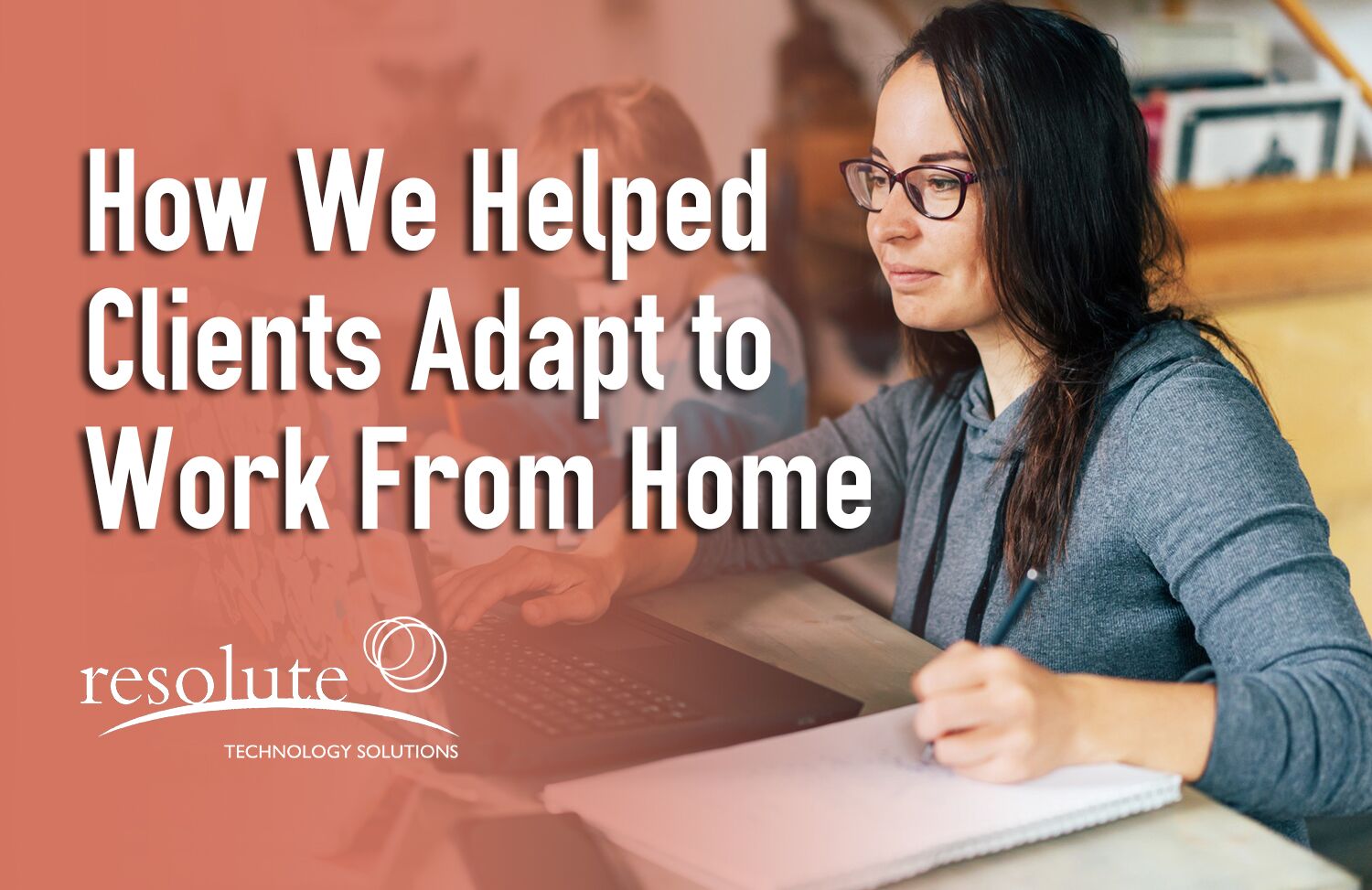In March, with social distancing measures looming, we had to act fast to ensure that our clients were able to work from home securely, efficiently, and without incurring additional costs.
At Resolute, we have clients across various locations and industries including Finance, Insurance, Agriculture, Manufacturing, Education, and Construction. Each client had a different mix of core systems, collaboration tools, security measures and backend systems. Given this, a variety of responses were required to prepare for remote working due to COVID-19.
Securing ‘Work from Home’ (WFH) Environments
The first step we took was assessing what would be required for each client to securely connect to key resources from their home environments.
Some common challenges clients were facing regardless of industry were:
- What do we do with our work desktops?
- How do we print?
- How do we secure the connection?
- How do we build capacity for remote connectivity on the VPN?
- How do we adjust workflows that were traditionally paper based?
Our team provided and configured a VPN portal that allowed Resolute clients to connect securely to their workplace desktop with access to core business apps and file shares from their devices at home. That way, they could access the corporate network securely over the internet using a relatively thin manner, preserving bandwidth for other users in the household. To solve print issues, we installed appropriate print drivers on work and home devices and supported connectivity to local printers. Where print wasn’t mandatory, we advised our clients on eSignature solutions in place of print.
We also strengthened firewalls and VPN connections for remote access and implemented other security safeguards such as Multi-Factor Authentication (MFA), email and web filtering, and enterprise antivirus on non-standard machines.
Clear Processes and Guidance
Since this shift was new and stressful for everybody, we wanted to ensure new WFH solutions and processes were as clear and straight-forward as possible.
We wrote how-to playbooks for our clients, so they had an easy guide to connecting to critical systems from their home networks. We also provided advice on best practices for remote working, digital workplace productivity, secure remote access, and other key areas critical to our client’s success in moving to a remote working environment.
Support for New Solutions
Our bilingual IT helpdesk was immediately available for questions, connectivity issues, file permissions, file shares, and support queries surrounding the new solutions. We were able to receive service requests via portal, email, and phone to smooth the transition to new technology and processes.
This support was provided non-contact using remote takeover technologies and collaboration tools.
Consistent and Proactive Communication
We set a regular cadence of COVID-19 meetings with some of our clients to provide active touchpoints during the pandemic and keep them informed of what is happening on our side as well as theirs.
We took the time to reach out to each individual client to see how they were doing through the shift to WFH. When we heard about certain pain points, we came together as a team to see what we could do to help resolve them.
Work from Home Capacity Without Additional Costs
Our team provided support and remote tool set up after hours to avoid outages and productivity loss. We pre-tested network speeds for capacity and performance before mass rollouts to client environments ensuring they could support remote traffic.
Wherever possible, we leveraged existing technology spend for our clients to reduce licensing costs and new expenditures. These included features that client’s had access to before but never needed configured.
How Our Clients Have Reacted
The client feedback we’ve received has been very positive. They’ve been able to migrate quickly to a WFH environment – successfully, productively, and securely. One client said: “there are enough stresses in moving everything remote – it’s amazing that technology ended up not being one of them.”



